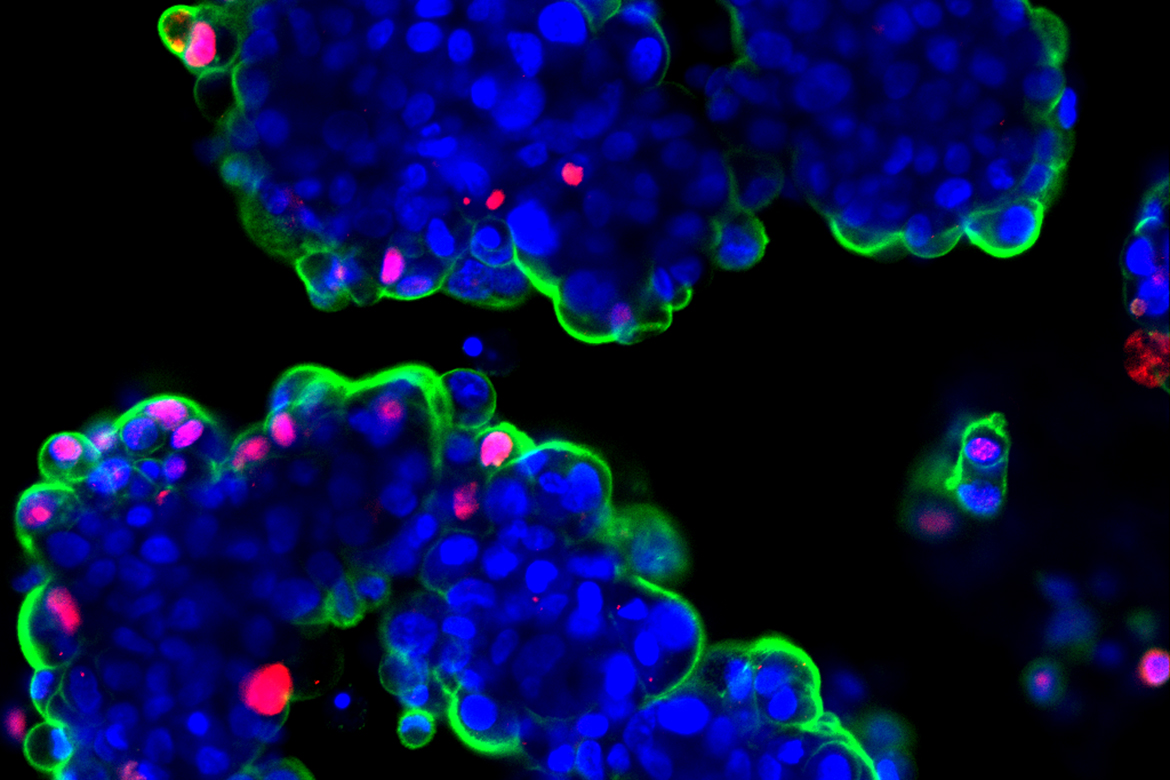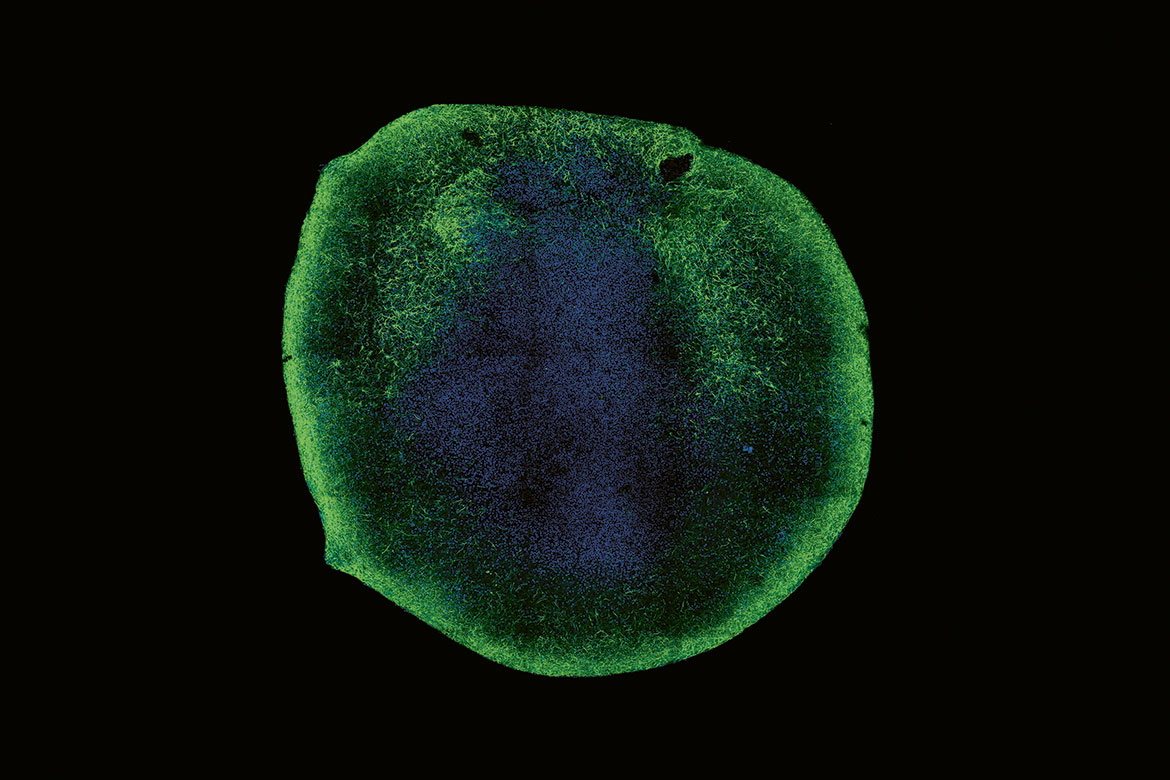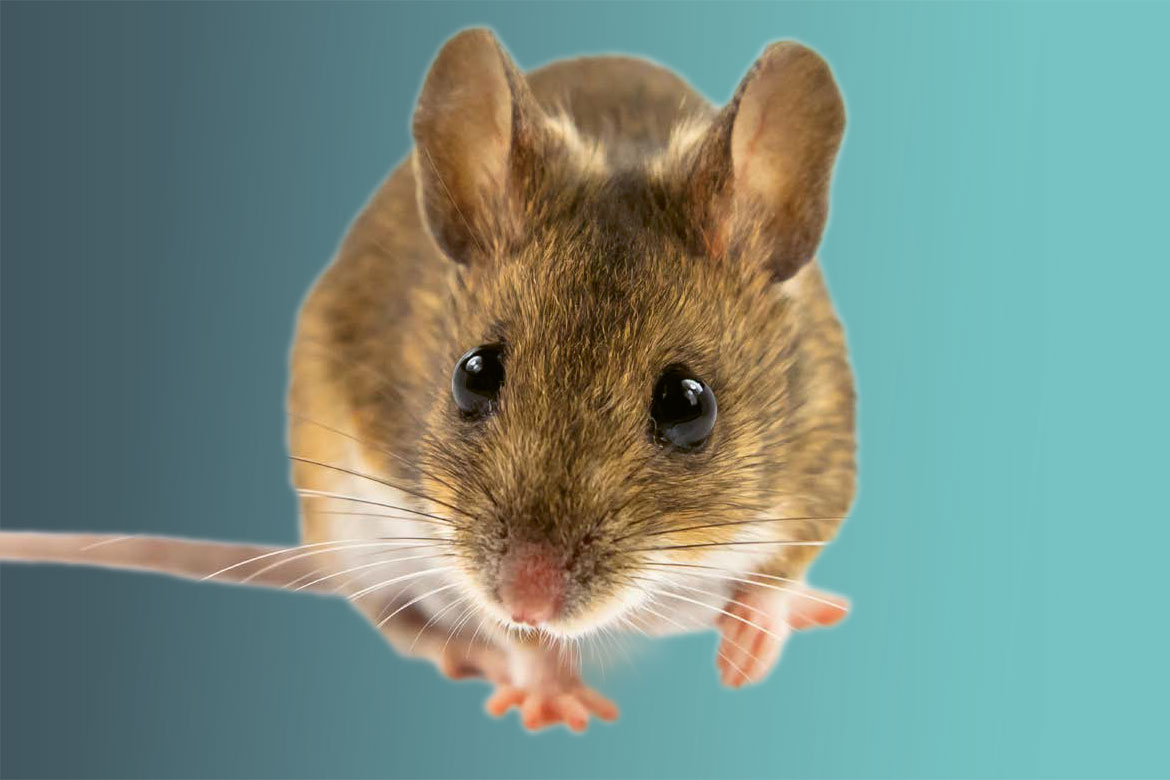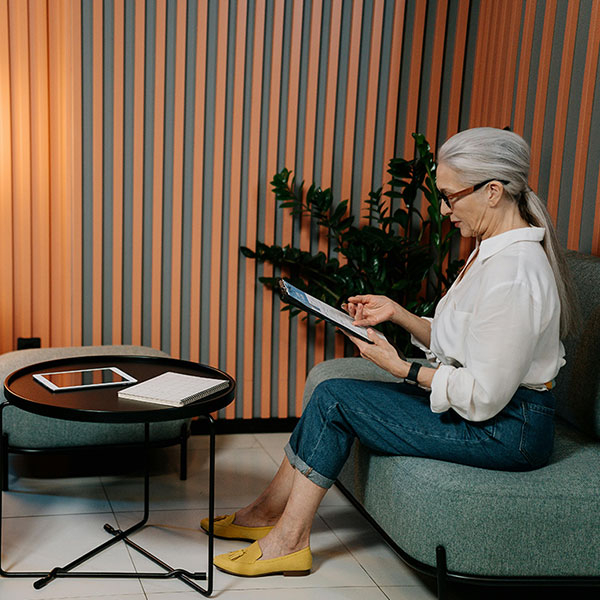PRECISION MEDICINE
Organoids promise better cancer therapies
Organoids grown in a petri dish resemble cancer tumours of the urinary bladder. Researchers want to use them to optimise treatments for bladder cancer.

These tumour cell clusters can be used to test cancer therapies. Different components of the cells are here marked with fluorescent colours – the cell nuclei are blue. | Image: Martina Minoli
The cell clusters are tiny, and when they aren’t under fluorescent light, they are incredibly inconspicuous. A research team at the University of Bern has been growing these so-called organoids from tumour cells taken from the urinary bladders of different patients. In the future, they could help doctors to personalise cancer therapies.
Under the leadership of the molecular biologist Marianna Kruithof-de Julio of the University of Bern, the team has shown that the cell clumps grown in the laboratory had the same gene mutations as the cancer cells of the patients’ tumours. This is an important prerequisite for the real goal of this research project: To compare the effectiveness of standard therapies for bladder cancer with possible new therapies, in hopes of finding the best possible treatment for each individual.
Kruithof-de Julio has observed that a traditional combination therapy for bladder cancer only worked for four out of the 14 organoids treated. “Hopefully, our organoids will one day enable us to test the effect of drugs before a patient receives them”, she says. And they might also help us to achieve an ever better understanding of which mutations render a therapy ineffective, and of how a tumour can become resistant to treatment over time – both in bladder cancer and in other tumours.
Before they can get that far, Kruithof-de Julio still has to carry out a clinical trial to try and demonstrate that her success in treating cancer with organoids can actually be transferred to human patients.




